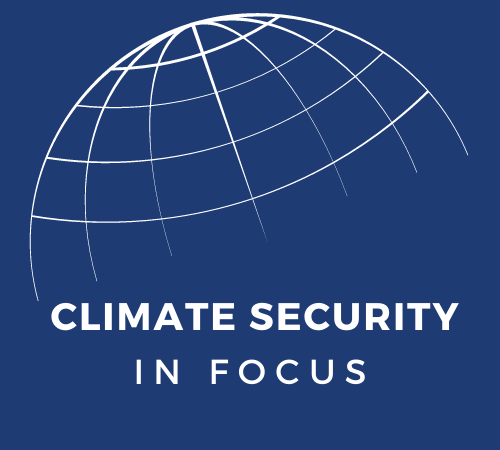
“Clean” and “Green” Hydrogen
October 8 is Hydrogen and Fuel Cell Day. Chosen for the atomic weight of hydrogen (1.008), it is a fitting place for ASP to kick off its Innovating Out of the Climate Crisis programming with an article on hydrogen and its transformative potential as a clean energy source.
Hydrogen is a “clean” fuel that that can be produced from many sources, including biomass, solar, wind, nuclear power, and natural gas. Although it is colorless, the global energy industry uses at least six different “colors” to characterize how hydrogen is produced. The most common form of hydrogen currently produced is gray hydrogen, which is created from natural gas or methane, and critically does not capture greenhouse gases produced during processing.
Hydrogen currently plays a large role as a raw material for fuel refineries, agriculture, mining, and heavy industry, which emits large quantities of greenhouse gases. Although its primary use as an industrial feedstock is well documented, there is a growing appreciation for clean hydrogen’s role as a transformative element of decarbonization efforts and the clean energy transition. It can be stored for long periods of time, and demand has grown more than threefold globally since 1975. As U.S. Secretary of Energy Jennifer Granholm explained, “[clean hydrogen] has the potential to remove carbon emissions from very difficult to decarbonize sectors of our economy, like steel and metals manufacturing and heavy transportation like trucks.” This makes it a critical component to address to end the fossil fuel era, enhance energy security, and achieve net-zero emissions goals.
However, clean (which does not necessarily indicate it is emissions-free) and “green” hydrogen (made from water with renewable energy and thus emissions-free) remains expensive and is not yet at the point where it is economically feasible to deploy at scale. Several domestic and international efforts are underway to bring down costs and facilitate widespread adoption across sectors and industries. In the U.S., the Department of Energy (DOE) has a Hydrogen Program Plan that outlines the agency’s strategic focus areas and coordinates multiple DOE offices’ hydrogen research, development, and demonstration (RD&D) activities. It builds upon preceding plans and strategies that date as far back as 2002, indicating that its potential has been long understood. This in-depth plan describes aspects of hydrogen energy systems and identifies the needs and challenges for the system writ large. Hydrogen was and remains a priority for the agency, which was further demonstrated in June 2021 when DOE launched the Hydrogen Shot as the first component of the Energy Earthshots Initiative, with the ultimate goal of reducing the cost of clean hydrogen by 80% in the next decade. Among other things, the effort aims to support a variety of demonstration projects to catalyze innovation and build hydrogen industry infrastructure.
Similarly, DOE’s Office of Clean Energy Demonstrations is funding up to $7 billion dollars in its effort to establish six to 10 Regional Clean Hydrogen Hubs across the U.S. These hubs will “create networks of hydrogen producers, consumers, and local connective infrastructure to accelerate the use of hydrogen as a clean energy carrier that can deliver or store tremendous amounts of energy.”
On the international stage, Green Hydrogen was a feature of several emissions reductions pledges at the UN Climate Conference (COP26), and the Green Hydrogen Catapult, a coalition of green hydrogen leaders, committed to develop 45 GW of electrolyzers with secure financing in the next five years. Japan actively pursues a strategy of procuring low-carbon hydrogen from abroad and has announced plans to invest $3.4 billion from its green innovation fund to accelerate research, development, and promotion of hydrogen over the next 10 years. Likewise, the European Union has put renewable hydrogen at the center of green post-Covid-19 recovery plans. However both Japan and South Korea also have robust strategies that push carbon intensive hydrogen across several industrial sectors, so it is important to clarify the definitions and types of hydrogen progress that is being made. More research and collaboration is needed to ensure impactful green hydrogen policies and actions that lead to overall emissions reductions. Given that hydrogen could account for up to 12% of global energy use by 2050, countries that embrace green hydrogen, invest in robust policy initiatives, innovations, and technological solutions will not only benefit from enhanced energy security, they will create jobs and reap widespread economic benefits. Several countries, including China, are already leading the hydrogen and clean energy transition, making this yet another aspect of strategic and great power competition.
Recognizing the national security and energy security elements of the hydrogen conversation, in June 2022, President Biden issued a presidential determination that provided DOE with the authority to utilize the Defense Production Act (DPA) to accelerate five key energy technologies, which included fuel cells for clean hydrogen, and underscores the importance of clean hydrogen as a core component of U.S. energy security and national security. Similarly, the Inflation Reduction Act had an unprecedented focus on clean hydrogen, including a production tax credit and broadened investment tax credits. To advance the hydrogen industry and clean energy transition further, the International Energy Agency (IEA) identified seven key recommendations to scale up hydrogen, including:
- establishing a role for hydrogen in long-term energy strategies;
- stimulating commercial demand for clean hydrogen;
- addressing the investment risks of first-movers;
- supporting research and development to bring down costs;
- eliminating unnecessary regulatory barriers and harmonizing standards;
- engaging internationally and tracking progress;
- and focusing on key opportunities to further increase momentum over the next decade.
This blog is part of ASP’s Innovating out of the Climate Crisis programming, which seeks to explore innovations in five key clean energy areas: electrification, hydrogen, carbon emissions, agricultural technology, and hard to abate energy sectors. ASP is producing a series of briefing notes, blog posts, and virtual events highlighting key policy instruments, challenges, and exciting innovations that will enhance our collective ability to adapt and mitigate the climate crisis and lead to a more resilient nation.





